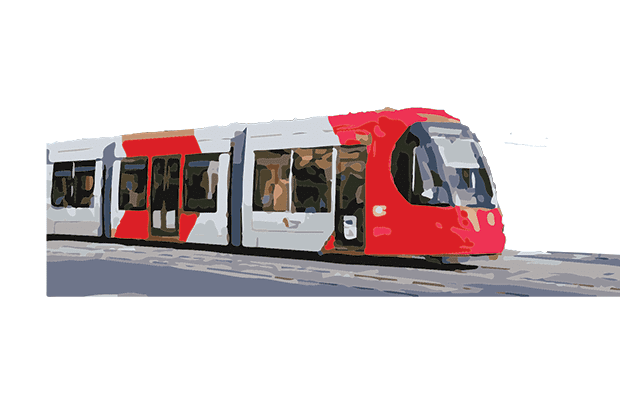After months of strikes on Sydney’s public transport system, it’s easy to lose sight of what is at stake. Words like ‘privatisation’ have echoed throughout public discourse so much that they have lost meaning. But although privatisation has taken a backseat during the recent sortie, its vast implications for public transport governance cannot be overstated if we are to keep our transit responsive and democratic.
Privatisation entered the Australian transit context in 1999, with the reforms of the Victorian Kennett government. It spread to NSW when ferries were privatised in 2011, and bus services in the Inner West in 2018. In 2020, the NSW government did the same to the remaining three inner-city regions, abolishing the State Transit Authority (STA). Along with the contracting of Sydney Metro to MTS, the STA’s abolishment brought stopping the privatisation of rail into focus for the RTBU.
In a NSW Government press release from 2019, the government claimed that privatisation would “lift the standard of transport,” offering greater investment and “delivering better services to commuters.” In 1999, the Victorian Kennett government envisaged improved services and cost minimisation as part of its plan.
Unfortunately, these goals were at best only scantily met.
In 2019, the Sydney Morning Herald reported that bus services in Sydney’s Inner West were running an average of 90.5 per cent on-time, compared to 93.5 per cent the previous year. The decline came after private operator Transit Systems replaced the State Transit Authority.
Meanwhile, in Melbourne, although significant cost reductions were achieved, these came at the expense of “an increase in rail service cancellations and a decline in punctuality,” according to a 2005 performance review of the franchising system. In 2015, ABC News reported that up to 400 services per month were skipping stations or short-terminating so as to ‘game’ the performance requirements in the franchise agreement.
In light of such evident failure of privatised systems to further public transport in Australia, there already appears reason for abandoning the drive to privatise. This cannot be taken as the sole reason for poor public transport. Consider, for example, the abysmal transport systems of North America, most owned by state and local governments.
But although privatisation may not be wholly to blame for poor public transport systems, it is conducive to a structure of secrecy and opaque governance that discourages competent operation and logical planning. It is fundamentally anti-democratic, in that it raises a barrier between operations and government without fundamentally altering any aspect of the system itself. In doing so, what was once a highly connected sector of the government now becomes a disjointed mess.
So, how does Sydney’s existing rail system fare when compared to those of other cities?
According to the 2009 review of Melbourne’s franchising system, Sydney fared far worse in staff and rolling stock costs and punctuality than Melbourne.
In addition, Sydney remains plagued by other issues in the operation of its transport system comparable to Melbourne’s. For instance, the farebox-recovery ratio, measuring the financial independence of the corporation, is approximately 50 per cent for Sydney Trains, according to the 2019 Auditor-General’s report, and 61 per cent in Melbourne, though this is complicated by the complex franchising system’s financial agreements.
Although it should be cautioned that financial stability is not the sole measure of an effective rail system, there are certainly publicly-owned systems that eclipse the private sphere in their efficiency. Hong Kong’s Mass Transit Railway (MTR) and Singapore’s MRT are both majority-state-owned merged operators and infrastructure holders. In 2019, the MTR made AUD $1.9 billion, and ran more than 99 per cent of services on time. Importantly, with the government as its main shareholder, it maintains the transparency and public interest of public transport with the flexibility and depoliticisation of a corporate structure. Highly complex and manipulable franchise agreements, and bureaucratic conservatism, as in Australia’s transport debacles, simply disappear.
This is not to say the MTR model is perfect; in 2015, the Singapore MRT recorded 2.5 disruptions per month, leading to an embarrassing apology and a commitment to significant upgrades to neglected infrastructure. But when we look at the best the world has to offer, it becomes clear that the best public transport companies are those which are responsibly yet dynamically managed by the government. There could be no system less fitted to this task than a privatised franchise.





